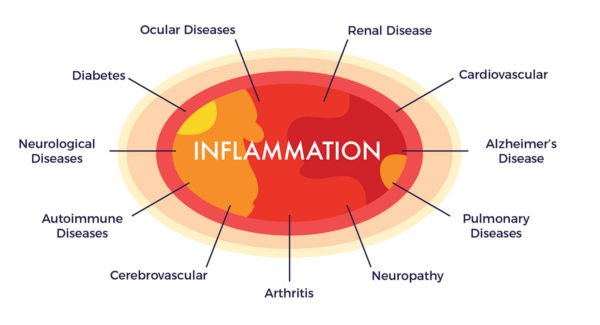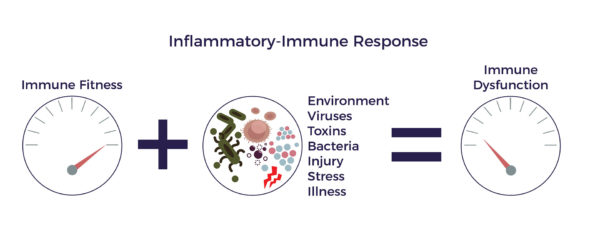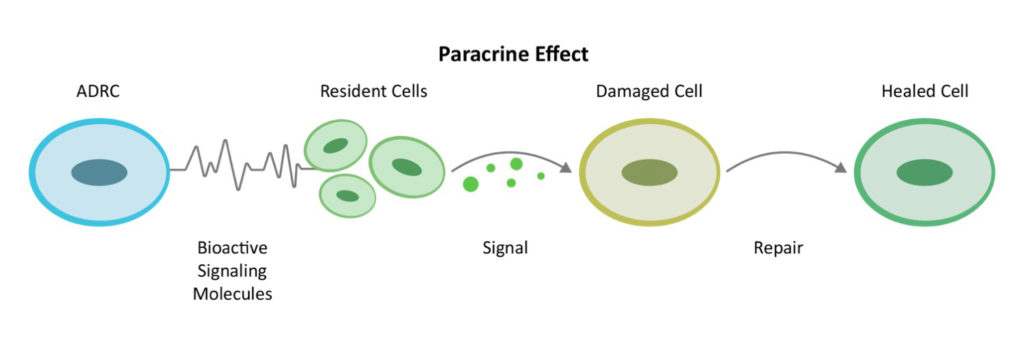Goals of Therapy
Using protocols carefully developed by our team and based on rigorous research, AMBROSE specializes in the safe harvest and delivery of autologous adipose-derived stem and regenerative cells (ADRCs) for improvements in symptoms, function and quality of life. Our approach and cycle of care is personalized for each patient with their specific lifestyle objectives in mind.
The Hazards of Widespread Inflammation
 There are many thousands of published medical papers on common chronic conditions such as heart disease, diabetes, kidney failure, osteoarthritis, rheumatoid arthritis as well as degenerative disc disease, pulmonary, neurologic, urologic and ocular diseases—to name some of the most prevalent—discussing the role of inflammation in the degenerative process.
There are many thousands of published medical papers on common chronic conditions such as heart disease, diabetes, kidney failure, osteoarthritis, rheumatoid arthritis as well as degenerative disc disease, pulmonary, neurologic, urologic and ocular diseases—to name some of the most prevalent—discussing the role of inflammation in the degenerative process.
Chronic systemic inflammation (inflammaging) is a common factor in diseases of aging, covering a broad spectrum of severe, debilitating and often life-threatening conditions. [1] [2]
 In the case of degenerative diseases, inflammation begins a vicious process by first recruiting the immune system, whose usual job it is to fight infections and other disease processes so as to assist healing. When the cells in the immune system (immune cells) sense the inflammation, they send out troops of anti-inflammatory “cytokines” (bioactive molecules) to fight them off. In situations when this process goes out of control, it is called an inflammatory-immune response.
In the case of degenerative diseases, inflammation begins a vicious process by first recruiting the immune system, whose usual job it is to fight infections and other disease processes so as to assist healing. When the cells in the immune system (immune cells) sense the inflammation, they send out troops of anti-inflammatory “cytokines” (bioactive molecules) to fight them off. In situations when this process goes out of control, it is called an inflammatory-immune response.
This type of abnormal immune response is tantamount to having a backseat driver who is chronically overreacting while “helping” you drive your car. It then leads to reduced blood flow (ischemia). Without good circulation, cells die off, scars form, tissues, nerves and organs degenerate. We call this the Spiral of Degeneration
Process of Repair
Because the factors involved in the Spiral of Degeneration are evident in nearly all chronic degenerative diseases, a wide range of serious conditions can potentially benefit from AMBROSE Cell Therapy and the use of ADRCs.

Through cell-to cell communication, ADRCs work to mobilize nearby cells to work more efficiently. This is called the paracrine effect.
ADRCs first decrease inflammation and the overactive immune responses. Once the backseat driving diminishes, they increase circulation with new blood vessel growth, prevent further programmed cell death (apoptosis), remodel wounds by decreasing scar size and regenerate the diseased tissue and nerves as well as help to restore function in our vascular, endocrine and immune systems. We call this the Process of Repair.

In the presence of a chronic condition or disease, ADRCs have the power to set in motion a process of repair by:

